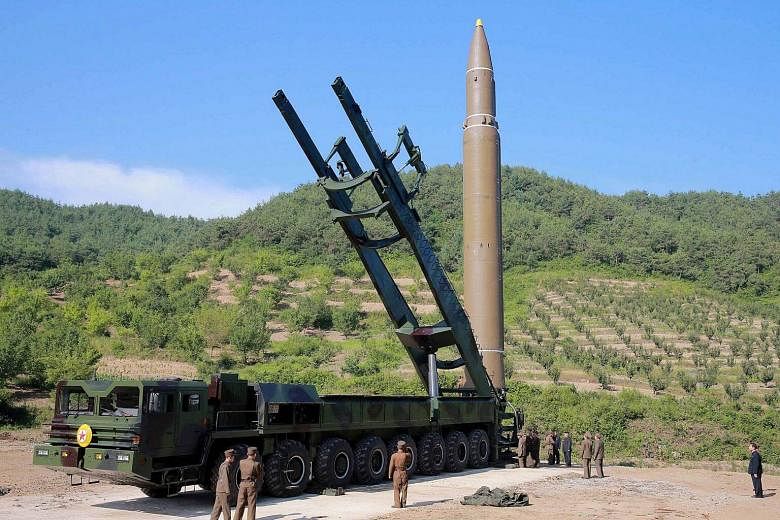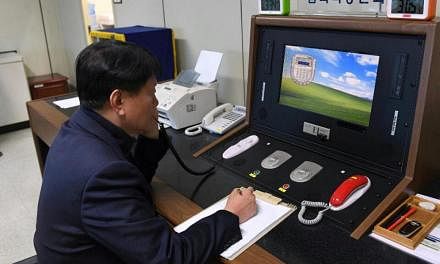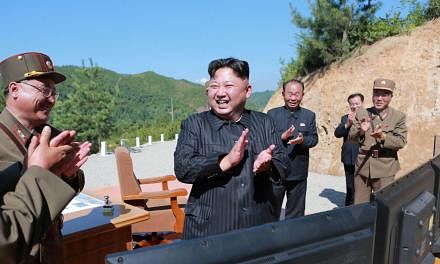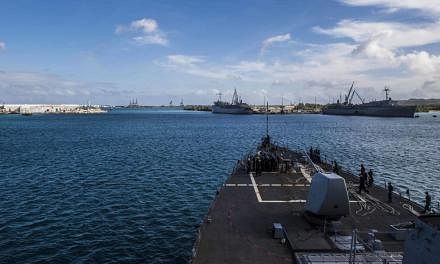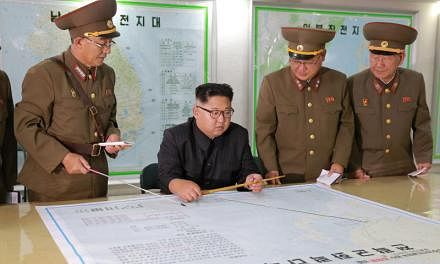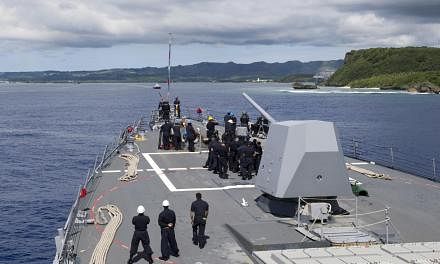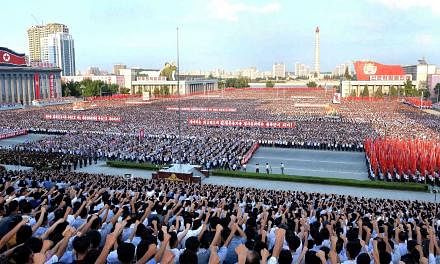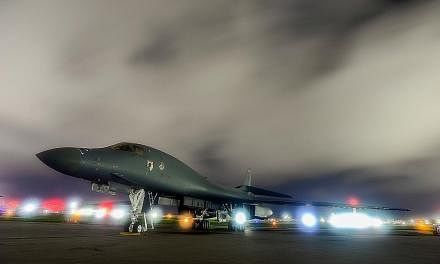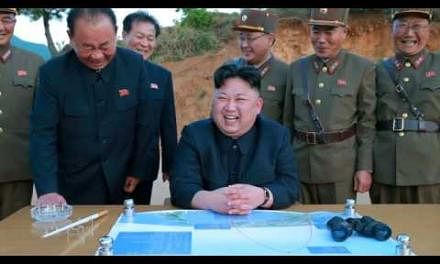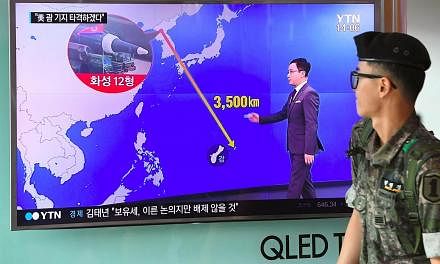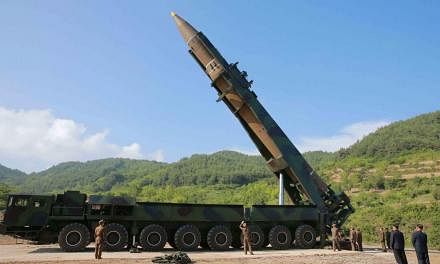WASHINGTON (AFP) - It is every Alaskan's nightmare: Finding themselves within range of a North Korean missile.
As that fear came one step closer to reality this week, America's ability to block an incoming attack is under scrutiny.
On Tuesday (July 4), the north-western US state awoke to the news that Pyongyang had test-fired an intercontinental ballistic missile (ICBM) which - though it came crashing down in the Sea of Japan/East Sea - had a probable range of over 5,500km, enough to reach Alaskan shores.
The US military has faith that its high-tech defensive systems can fend off any attack from North Korea - at least for now.
"It's something we have confidence in," said the Pentagon's spokesman, Navy Captain Jeff Davis, who called the latest development a "nascent threat".
But other observers are not so sure, rattled by the pace of North Korean leader Kim Jong Un's missile programme and his stated aim of building a nuclear-tipped ICBM.
"Now more than ever, it's imperative for Alaskans and the rest of the nation that we be prepared," tweeted Senator Dan Sullivan, one of several Alaskan congressmen who backed a bipartisan Bill last month aimed at expanding US missile defences.
The state of 750,000 people already hosts a key element of the country's current defence system.
The Ground-based Midcourse Defence (GMD) system - installed at Fort Greely, about 100 miles (160km) outside Fairbanks in Alaska, and California's Vandenberg Air Force Base - will comprise 44 missile interceptors by the end of the year.
But if the backers of the Advancing America's Missile Defence Act of 2017 have their way, the government would authorise an additional 28 ground-based interceptors at Fort Greely.
Among the Bill's co-sponsors is Alaskan Congressman Don Young, who believes "the recent actions by North Korea, a rogue and irrational regime, underscores the importance of Alaska's missile defence systems", his office said in a statement.
The catastrophic scenario of having to stop an incoming ICBM as it hurtles through space was put to the test in May, when the military successfully launched a GMD interceptor from the California base.
The missile blasted outside Earth's atmosphere and smashed into a dummy ICBM target, destroying it in a direct collision - a move akin to hitting a bullet with another bullet.
But the GMD system has had a checkered record in previous tests, failing in earlier launches against slower-moving targets. And it could be overwhelmed by a barrage of incoming missiles.
That is why Mr Joel Wit, a co-founder of the 38 North programme of the US-Korea Institute at Johns Hopkins University, said he was not fully confident in US anti-missile capabilities.
He sees a risk that Mr Kim could build enough missiles to overwhelm US defences - and that one could slip through the defensive net in a phenomenon known as "leakage".
"In the case of a conflict, leakage with nuclear weapons is not a good thing," Mr Wit told AFP.
He had previously said he did not think North Korea would be able to deploy any nuclear-tipped ICBMs until late 2020 or soon after, but all bets are off given the latest test.
"It's quite possible the North Koreans could deploy much sooner than then, and do that for the shock effect," he said.
Experts do not think Mr Kim has managed to miniaturise a warhead to put on an ICBM, though Mr Kim has repeatedly stated that is his goal.
"Clearly they are working on it," Captain Davis, the Pentagon spokesman, said.
Aside from the GMD, the US and its allies also have at their disposal what is known as the Aegis Ballistic Missile Defence System (Aegis). The ship-based system's highly sensitive radars and sensors feed ICBM-tracking data to the GMD facilities in California and Alaska, and Aegis is itself capable of intercepting shorter-range missiles.
Retired vice-admiral Pete Daly, who now leads the US Naval Institute, said the Aegis system may also one day have a limited ability to intercept ICBMs.
"There is some progression and capabilities here that folks are working on," he told Agence France-Presse news agency.
In the meantime, the US military this year began deploying the Terminal High Altitude Area Defence (Thaad) system to South Korea, capable of destroying short, medium and intermediate-range missiles in their final phase of flight.
The move infuriated China, which has argued the deployment would further destabilise the situation on the Korean peninsula.
The US and its allies South Korea and Japan also have Patriot Advanced Capability-3 interceptor batteries. But these are designed to protect against a regional threat and would have limited effect against an ICBM.
Integrating all three systems - Thaad, Aegis and Patriot - is another key proposal in the legislation championed by Senator Sullivan and Congressman Young.
